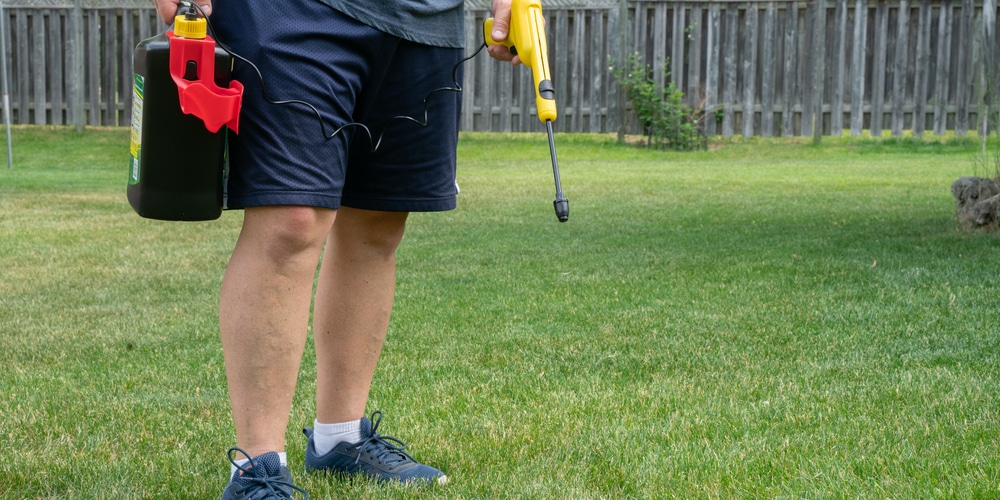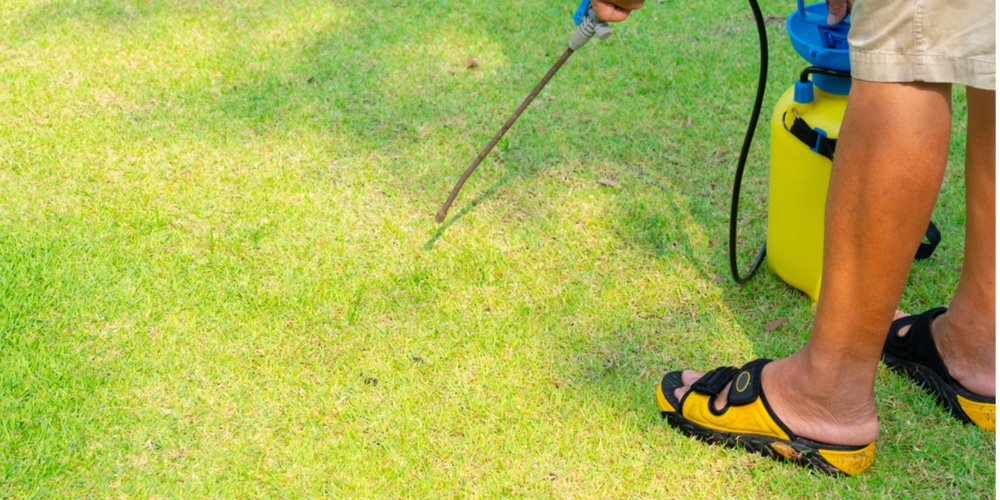Pre-emergent herbicides are often used in most lawns as a preventive measure to keep weeds from germinating and growing. They work by creating a barrier on the soil surface that stops weed seeds from sprouting. This works on most kinds of weeds and wild grasses, leaving most people wondering – does it also work on dandelions?
Dandelions, although they have pretty yellow flowers, are one of the peskiest weeds that often grow on lawns. They’re invasive, and these wildflowers release a lot of seeds that quickly spread and reproduce. They emerge during the spring and can quickly take over a lawn if not removed.
With that in mind, it is difficult to get rid of them. If you don’t do something about it quickly, these weeds can easily take over. They can take your once lush green lawn and turn it into a field of yellow dandelions for the rest of the year.
Dandelion Pre Emergent: Does it Work?
Before we answer that, we need to understand dandelions and how they grow. Dandelions are tap-rooted perennial weeds. These taproots can be buried 2-3 feet underneath the soil. The leaves are green and jagged, while the flowers are yellow and found at the end of the stem.
While they may seem pretty, they can easily compete with your lawn grass for space, water, and nutrients. When they mature and go to seed, with one flower that can produce up to 200 seeds, they can quickly take over your lawn in just a few short weeks.
Pre-emergent herbicides work by stopping the growth of dandelions. Technically, it works as a preventative measure since it needs to be applied before the dandelions germinate and grow. These herbicides will stop the dandelions from growing.
Having dandelions growing in your yard is a different story. Since pre-emergent herbicides won’t kill any mature plants, this means that dandelions that have already germinated and are growing will not be affected.
So does pre-emergent herbicide work on dandelions? No, not really. It can prevent them from germinating and growing, but it won’t do much to kill the already established ones.
How to Get Rid of Dandelions
If pre-emergent herbicides won’t work, then what will? There are a few ways to tackle this problem, such as:
Manual Removal
The best way to get rid of dandelions is to pull them up by the root. This is the most difficult, time-consuming way of dealing with weeds, similar to dandelions, but by far the most effective.
Ensuring that you get rid of everything, including the taproot, is critical to preventing them from coming back. Unfortunately, this isn’t always possible, which leads us to our next method.
Apply a Selective Post-Emergent Herbicide in Lawns
There are two main types of herbicides: selective and non-selective. Selective herbicides will kill certain plants while leaving others unharmed. Non-selective herbicides, on the other hand, will kill everything – including your lawn grass.
Since pre-emergent herbicides don’t work for established dandelions, the next best thing is to use a post-emergent herbicide. This herbicide is specially formulated for use on lawns targeting grassy weeds without harming the actual grass.
Apply Non-Selective Herbicide on Cement Cracks
Weeds don’t just appear on your manicured lawn. They can also show up on sidewalks, driveways, and other cemented areas.
In these cases, the best option is to use a non-selective herbicide. This type of herbicide will kill everything – weeds and grass. Be careful when using this around your lawn, though, as you don’t want it drifting and killing your grass. Apply when the winds are calm and avoid spraying on windy days.
When to Apply Pre-Emergent and Post Emergent Herbicides for Dandelion Control
As a general rule, pre-emergent herbicides are best applied during the first days of spring. This is to make sure that grass weeds haven’t had the chance to seed and germinate yet. This prevents them from growing in the first place.
For post-emergent herbicides, you can spray dandelions at any time of the year. However, it is ideal to use it in the early morning. At this time of the day, these weeds have the fastest growth rate, which means the herbicide will be more effective.
One thing you should take note of, however, is not to water your grass after herbicide application. If there’s a predicted rainfall, ensure that you apply the herbicide a few days before to give it enough time to work.
Depending on how infested your yard is, you can either go with spot treatments or blanket treatments. Spot treatments are best for small areas with a few weeds. On the other hand, blanket treatments are ideal for large yards that have a significant weed problem.
To ensure that dandelions won’t come back, reapplying your pre-emergent herbicide during the spring is critical. This will help to prevent new seeds from germinating and ensure that your yard is dandelion and weed-free all year long!
Final Thoughts
Dandelions are one of the most common lawn weeds. While they may not seem like a big deal, these pesky plants can wreak havoc on your yard. Despite the good reputation most pre-emergent herbicides have, they, unfortunately, don’t work on getting rid of them once they’ve started to spread.
A selective post-emergent, maintained with a pre-emergent herbicide yearly, is the best combination for dandelion control in your yard.


